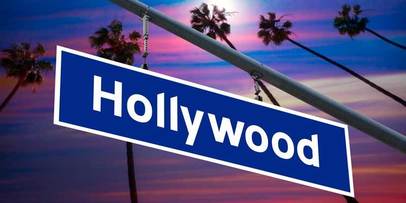 Hollywood is one of the most recognizable attraction and location in the Los Angeles metropolitan area. Hollywood is one of the most recognizable attraction and location in the Los Angeles metropolitan area.
Hollywood is one of the most recognizable attraction and location in the Los Angeles metropolitan area.
The area’s entertainment origin began in 1911 when the Nestor Company opened Hollywood’s first film studio in an old tavern on the corner of Sunset and Gower. Not long thereafter Cecil B. DeMille and D. W. Griffith began making movies in the area drawn to the community for its open space and moderate climate. The needs of this thriving new industry created radical changes in the community causing a clash between older and newer residents. Acres of agricultural land south of what-is-now Hollywood Boulevard were subdivided and developed as housing for the enormous numbers of workers that movie-making required. Hollywood is one of the most recognizable attraction and location in the Los Angeles metropolitan area. The architectural styles of the buildings were representative of those most popular between the World Wars. Banks were typically designed in the more formal Beaux Arts styles, but other buildings in the community took on more playful personalities. The ornamental Spanish Colonial Revival style reflected Hollywood’s self-conscious extravagance while the new Art Deco and Moderne styles fit the community’s aspirations for glamour and sophistication. Hollywood has been anything but static, however, and after a few decades as the capital of film glamour, the neighborhood changed again. Although much of the studio work remained in Hollywood, many stars moved to Beverly Hills, and the elegant shops and restaurants left with them. Hollywood today is a diverse, vital, and active community striving to preserve the elegant buildings from its past. Much of the movie industry remains in the area, although the neighborhood’s outward appearance has changed. In 1985, the Hollywood Boulevard commercial and entertainment district was officially listed in the National Register of Historic Places protecting the neighborhood’s important buildings and seeing to it that the significance of Hollywood’s past would always be a part of its future. |
- Home
-
Products
-
Business
>
- Business Life Insurance
- Auto Service & Repair Insurance
- Business Owners Package (BOP) Insurance
- Builders Risk Insurance
- Commercial Auto & Fleet Insurance
- Commercial Earthquake Insurance
- Commercial Umbrella Insurance
- Contractors Insurance
- Employment Practices Liability Insurance
- Group Benefits
- Habitational Insurance
- Inland Marine Insurance
- Insurance Bonds
- Institutional insurance
- Manufacturing Insurance
- Professional Liability Insurance
- Real Estate Insurance
- Restaurant Insurance
- Retail Insurance
- Surety and Fidelity Bond
- Wholesale Distribution
- Workers Compensation
-
Personal
>
- Life >
- Other >
-
Business
>
-
Resources
- Blog
- About
- Contact
- Home
-
Products
-
Business
>
- Business Life Insurance
- Auto Service & Repair Insurance
- Business Owners Package (BOP) Insurance
- Builders Risk Insurance
- Commercial Auto & Fleet Insurance
- Commercial Earthquake Insurance
- Commercial Umbrella Insurance
- Contractors Insurance
- Employment Practices Liability Insurance
- Group Benefits
- Habitational Insurance
- Inland Marine Insurance
- Insurance Bonds
- Institutional insurance
- Manufacturing Insurance
- Professional Liability Insurance
- Real Estate Insurance
- Restaurant Insurance
- Retail Insurance
- Surety and Fidelity Bond
- Wholesale Distribution
- Workers Compensation
-
Personal
>
- Life >
- Other >
-
Business
>
-
Resources
- Blog
- About
- Contact
